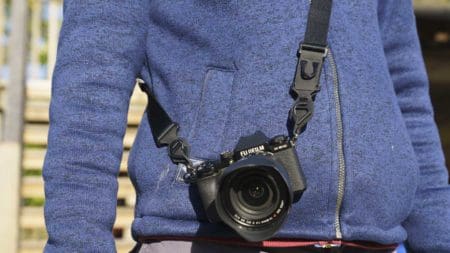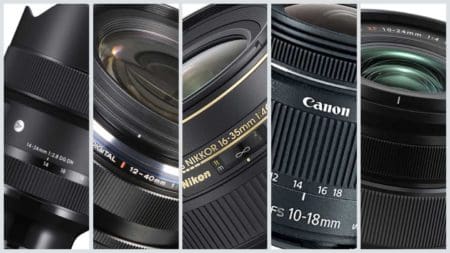A full-frame camera is a camera that has a sensor that’s the same size as a 35mm film frame and stepping up from a camera with a smaller sensor to a full-frame model can result in better quality images. That’s because, if the pixel count is the same, each photosite on the sensor receives more light. This means that less gain needs to be applied to the signal generated by the photosites and as a result, less image noise is generated and the camera is able to capture a wider range of tones in a single photograph.
It’s this promise of better image quality that often drives photographers to upgrade from cameras with APS-C and Four Thirds type sensors.
Full-frame sensors also bring greater scope to restrict depth of field so that backgrounds can be blurred more dramatically. That’s especially attractive to portrait photographers, but it’s a useful creative tool for all sorts of photography.
Many photographers upgrading to full-frame from an APS-C or Four Thirds type camera also take the opportunity to swap from a DSLR to a mirrorless camera. There are some significant advantages to this, not least that mirrorless cameras work in live view mode full time. That means that their electronic viewfinders show the impact of the camera settings, so if the selected aperture and shutter speed combination is going to underexpose the shot, for example, you’ll see it before you press the shutter button.
Another reason that photographers who are buying their first full-frame camera tend to opt for a mirrorless model is that there aren’t that many new full-frame DSLRs. In fact, in 2020, there were only three announced, the Nikon D6 and the Canon EOS-1DX Mark III, which both cost over £6000 / $6000 each, and the more enthusiast-centric Nikon D780 which retails for around £2,199 / $2,700. That tells you something about the way that the market has switched to mirrorless photography.
Best first full-frame cameras
With all of this in mind, we’ve rounded up the best cameras for photographers looking their first full-frame camera. You might also find our guides on the best beginner cameras and best professional cameras for beginners and students useful when making a choice. For a deeper dive into the many different camera types and features available, check out our range of camera buying guides.
Canon EOS RP
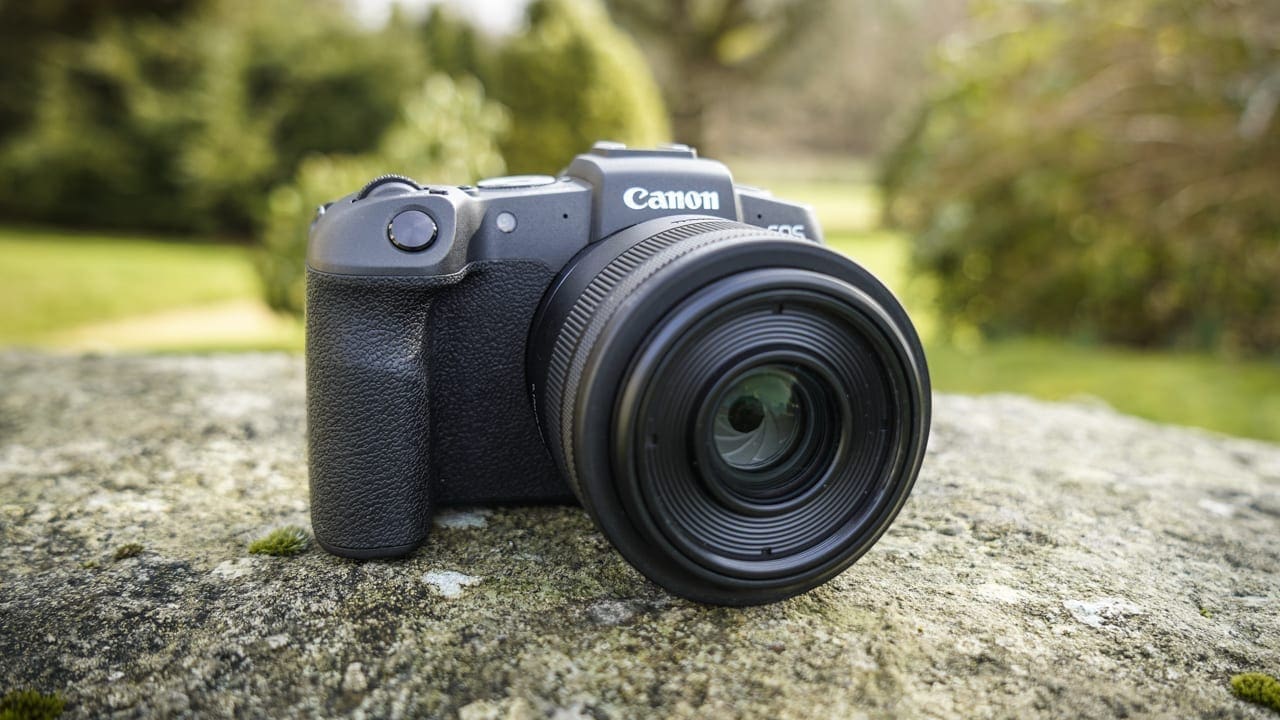
Specification
- Camera type: Mirrorless
- Announced: February 2019
- Lens mount: RF
- Sensor: 26.2Mp full-frame (35.9 x 24mm) CMOS
- Processing engine: Digic 8
- Autofocus system: Phase detection using Dual Pixel CMOS AF with 4,799 focus positions
- Sensitivity range: Stills: ISO 100-40000 expandable to ISO 50-102400, Video: 4K Auto: 100-12800, H2: 102400, Full HD/HD - Auto: 100-25600, H2:102400
- Maximum continuous shooting rate: 5fps until card full with Jpegs or 50 raw files or 4 fps with AF Tracking
- Key video specifications: 4K (3840 x 2160) at 25/23.98fps, Full HD (1920 x 1080) at 59.94/50/29.97/25fps)
- Viewfinder: 0.39-inch 2.36-million-dot OLED
- Screen: Vari-angle 3-inch Clear View LCD II touchscreen with 1.04 million dots
- Dimensions (WxHxD): 132.5 x 85.0 x 70.0mm
- Weight: 485g with memory card and battery
The Canon EOS RP was introduced after the Canon EOS R as Canon’s second full-frame mirrorless camera. It may not have quite the same impressive specification or staggeringly good AF system as the later Canon EOS R6 and R5, but it’s still very capable and is much more affordable.
The build quality of the Canon RP is very good, in keeping with an enthusiast-level camera, but the handling is a bit more basic in some respects as you don’t have as much direct access to features as with some other models. Nevertheless, the touch control is implemented extremely well and the vari-angle screen is a major bonus for creative photography.
Those with large hands may want to invest in the EG-E1 Extension Grip to make the RP a bit more comfortable when long lenses are mounted. But it’s good to have the choice.
£1049
$999For
- Compact full-frame body
- Vari-angle touchscreen
- Attractively priced
Against
- No joystick for setting the AF point
- Poor battery life
- 1.6x crop applied to 4K video
Nikon Z5

Specification
- Camera type: Full-frame (FX) mirrorless
- Announced: 21st July 2020
- Lens mount: Nikon Z
- Sensor: 24.3Mp full-frame CMOS
- Autofocus system: 273-point Hybrid (combines phase and contrast detection) with Eye AF for humans and animals
- Stabilisation: 5-axis in body
- Viewfinder: Electronic 0.39-inch 3,690,000-dot OLED
- Screen: 3.2-inch 1,040,000-dot tilting touch-screen
- Maximum video resolution: 4K (with 1.7x crop)
- Maximum continuous shooting rate: 4.5fps
- Storage: Dual SD/SDHC/SDXC UHS-II
- Connectivity : Wi-Fi, Bluetooth, SnapBridge
- Dimensions (W x H x D): 134 x 100.5 x 69.5mm (5.3 x 4.0 x 2.8inches)
- Weight: 590g/ 1 lb. 4.9 oz body only, 675g / 1 lb. 7.9 oz with battery and memory card but without body cap
Combined with the compact Nikkor Z 24-50MM F/4-6.3 kit lens, the Nikon Z5 makes a very attractive camera for everyday photography and travel as, despite it’s full-frame sensor, it’s smaller than some APS-C format DSLRs.
While the maximum continuous shooting rate of 4.5fps doesn’t really impress in 2021, the Z5 still has a good 273-point phase detection AF system with Eye-detection AF for humans and pets. There’s also an excellent 5-axis image stabilisation system built-in and, of course, the Nikon Z mount which means that the Z5 is compatiblae with Nikon’s growing range of Z optics as well as F-mount lenses via the Nikon FTZ adaptor.
Despite being Nikon’s ‘entry-level’ full-frame mirrorless camera, the Z5 has dual SD card slots that are UHS-II compatible and there’s a tilting touchscreen on the back that makes using the camera intuitive.
£1719
€1999 / $1397For
- Compact size and full-frame sensor
- Nikon Z mount
- Best in class viewfinder
Against
- Maximum continuous shooting of 4.5fps (frames per second)
- 1.7x crop applied to 4K video
- 24-50mm kits lens is compact but has a limited zoom range
Panasonic Lumix S5
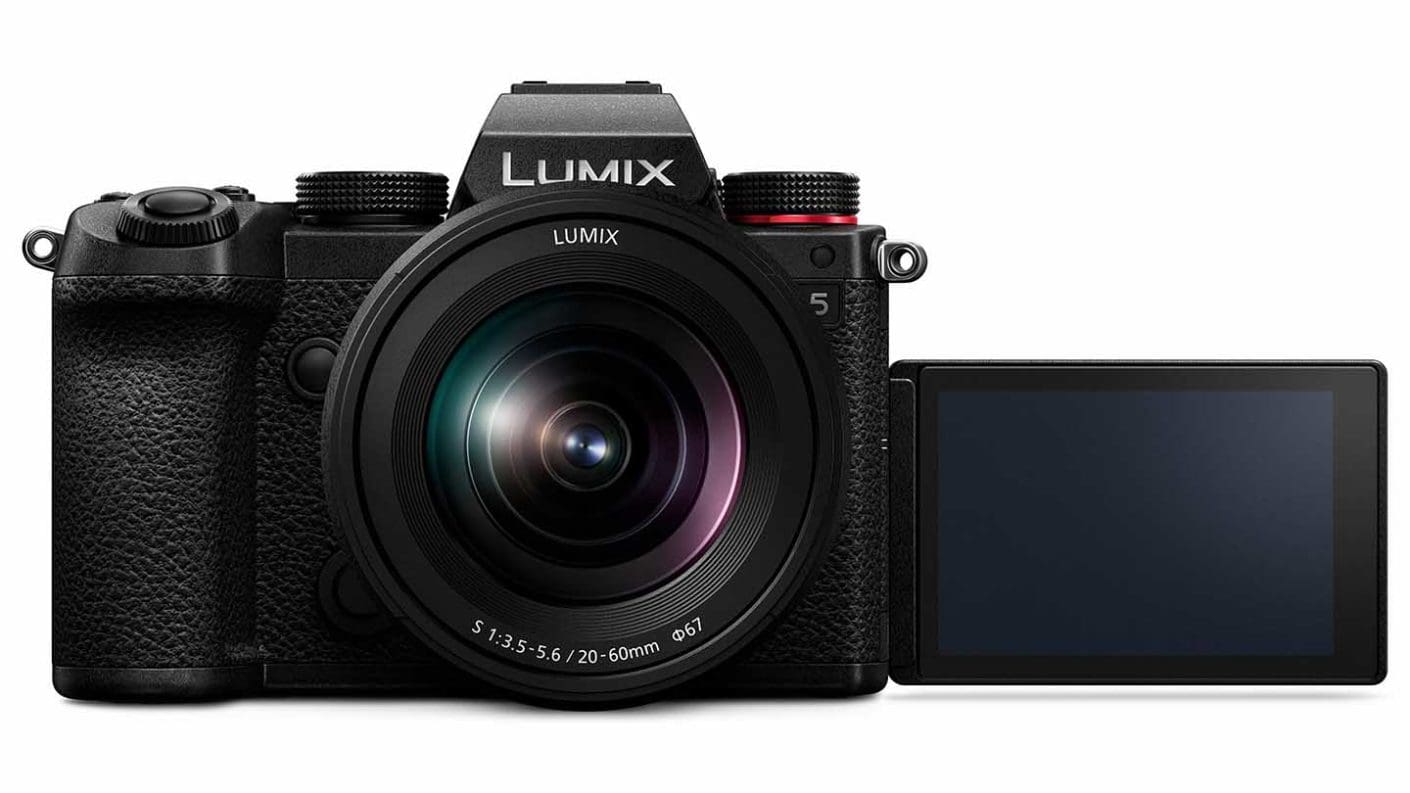
Specification
- Camera type: Mirrorless
- Announced: 2nd September 2020
- Sensor: 24.2Mp full-frame (35.6 x 23.8mm) CMOS sensor
- Lens mount: L
- Construction: Magnesium alloy with dust and splash resistant seals
- Stabilisation: 5 axis in-body IS to 5EV, 6.5 with Dual IS
- Screen: 3-inch 1,840,000-dot vari-angle touchscreen
- Viewfinder: 2,360,000-dot OLED electronic viewfinder with 0.74x magnification
- Key video specifications: 4K (3840x2160) 4:2:2 10-bit LongGOP H.264 29.97/23.98p/25p and 150Mbps for up to 30mins, 4K (3840x2160) 4:2:0 8-bit LongGOP H.264 29.97/23.98p/25p and 100Mbps unlimited, Full HD (1920x1080) 4:2:2 10-bit LongGOP H.264 59.94/29.97/23.98p/50/25p and 100Mbps unlimited
- Slow & Quick motion: Slow: 4K up to 60p in MP4, FHD up to 120p at full width or 180p with narrower angle of view, Quick: 4K to 1p
- Sensitivity: Dual native ISO 100, 6400, Range: ISO100-51,200, expandable to ISO 50-204,800. Dual-native ISO for video
- Shutter speed: 60-1/16,000sec, Bulb to 30mins
- Maximum continuous shooting rate: AF-S or manual focus: 7fps, AF-C: 5fps, 6K Photo 30fps, 4K Photo: 60fps
- Memory: Dual SD card slots, 1 UHS-II, 1 UHS-I
- Weight: 714g with memory card and battery
- Dimensions (WxHxD): 132.6x97.1x81.9mm
Panasonic decided to address some of the criticisms of its S1-series of full-frame mirrorless cameras with the S5 and made it significantly smaller and more affordable. In fact, the Panasonic S5 is smaller than the Micro Four Thirds Panasonic GH5.
Panasonic also completely reworked the S5’s autofocus algorithm to make it more responsive. That work paid off, making the S5 a good choice for general photography and videography, but it’s not quite as snappy as the phase-detection AF systems in cameras like the Canon EOS R6 and Sony A7 III.
The S5 is aimed at people who have started out as photographers and content creators and who want to create more video. Its headline video specification is that it can shoot 4K (3840×2160) footage in 4:2:2 and 10-bit LongGOP H.264 at 29.97/23.98p/25p. That’s when recording internally to an SD-type card.
It can shoot at that quality and resolution for up to 30 minutes, but if you drop to 4:2:0 8-bit 4K footage, it can record indefinitely until the memory cards are full.
In summary, the Panasonic Lumix S5 is a very nice all-rounder that captures attractive stills and video.
£1799
$1998For
- Smaller than the MFT Lumix GH5
- Viewfinder and vari-angle touchscreen
- V-log pre-installed
Against
- Contrast-detection AF doesn't match the phase-detection competition
- On-screen icons are quite small
Sony A7C
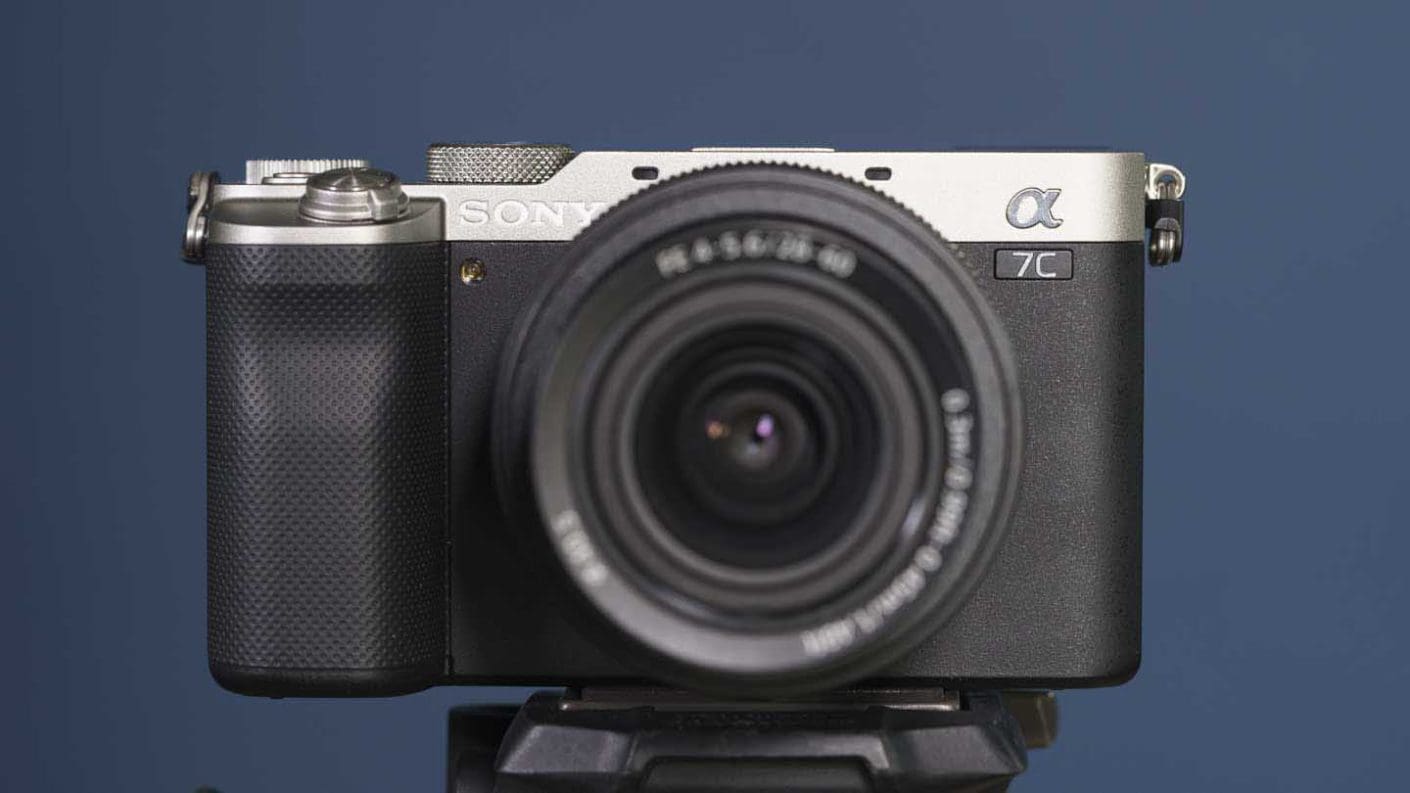
Specification
- Announced: 15th September 2020
- Camera type: Full-frame mirrorless
- Sensor: 24.2Mp Full frame (35.6×23.8mm), Exmor R CMOS sensor
- Processor: Bionz X
- Lens mount: Sony E
- Sensitivity range: ISO 100-51,200, expandable to ISO 50-204,800
- Maximum continuous shooting rate: 10fps with full AF and metering
- Video resolution: 4K: 3840 x 2160 (4:2:0, 8bit, NTSC) (Approx.) 30p (100Mbps / 60Mbps), 3840 x 2160 (4:2:0, 8bit, NTSC) (Approx.) 24p (100Mbps / 60Mbps), 3840 x 2160 (4:2:0, 8bit, PAL) (Approx.) 25p (100Mbps / 60Mbps)
- Autofocus system: Hybrid with 693 phase detection points and 425 contrast detection points
- Eye AF: Stills: Human or Animal, Video: Human
- Viewfinder: 0.39-inch 2,359,296-dot OLED electronic viewfinder
- Screen: Vari-angle 3-inch 921,600-dot vari-angle touchscreen
- Stabilisation: 5-axis in-body image stabilisation giving up to 5EV shutter speed compensation
- Storage: SD/SDHC/SDXC (UHS-I/II)
- Dimensions (W x H x D): 124.0 x 71.1 x 59.7mm / 5 x 2 7/8 x 2 3/8inches
- Weight: 509g / 1lb 2.0oz with battery and card
If you’re looking for a small full-frame camera with Sony’s excellent autofocus and noise control systems then the Sony A7C is the way to go as it’s smallest of the Sony A7-series cameras. It has a flat-topped rectangular body that makes it look similar to the Sony A6600, but there’s also a vari-angle screen rather than a tilting monitor. And inside, the A7C has the same 24Mp sensor and core features as the Sony A7 III.
Paired with the FE 28-60mm f/4-5.6 kit lens., which is a small collapsible optic, the A7C makes an attractive choice for travel and everyday photography.
However, in shrinking down the A7C, Sony also made a few compromises on the handling. There’s no joystick on the back of the camera for example, and there’s only one control dial. In addition, the electronic viewfinder is the type of unit that is more commonly found in APS-C format cameras.
While it’s great to have a vari-angle screen, if you can live without it, and don’t mind a slightly larger camera, then the Sony A7 III, which sits above the A7C in the range, makes a great alternative and costs a little less.
£1709
$1798For
- Small for a full-frame camera
- Vari-angle screen
- Excellent AF system
Against
- Limited touch-control
- Complex menu
- Underwhelming viewfinder
Sony A7 III

Specification
- Announced: 26th February 2018
- Camera type: Full-frame mirrorless
- Sensor: 24.2Mp Full frame (35.6×23.8mm), Exmor R CMOS sensor
- Processor: Bionz X
- Lens mount: Sony E
- Sensitivity range: Stills: ISO 100-51,200, expandable to 50-204,800, Video: ISO 100-51,200, expandable to 100-102,400
- Maximum continuous shooting rate: 10fps with full AF and metering
- Maximum video resolution: 4K (3840 x 2160)
- Autofocus system: Hybrid with 693 phase detection points and 425 contrast detection points
- Viewfinder: 0.5-inch OLED with 2,359,296 dots
- Screen: 3-inch 921,600-dot tilting touchscreen
- Storage: Dual Slot, Slot 1: SD (UHS-I/II), Slot 2: Multi slot for Memory Stick Duo/SD (UHS-I)
- Dimensions (W x H x D): 126.9 x 95.6 x 73.7mm
- Weight: 650g
The A7 III is the 24Mp all-rounder in the Sony A7-series of full-frame mirrorless cameras. And while it doesn’t have the revised menu structure and more extensive touch-control that was introduced with the Sony A7S III, it has an excellent AF system that makes it easy to get fast-moving subjects sharp and it can shoot at up to 10fps with continuous focusing.
Unlike the Sony A7C, the A7 III has a joystick on its back for speedy AF point selection and there are front and rear control dials for fast setting adjustments.
The A7 III can also record 4K (3840 x 2160) footage at 30p/25p with S-Log2 and S-Log3 on hand if you want more scope for grading.
There’s a tilting screen on the back of the camera, which allows you to set the AF point with a tap, and a 0.5-inch type OLED viewfinder that gives a good preview of the image as it will be captured.
£1699
$1999For
- Good-quality 24Mp full-frame sensor
- Excellent autofocus system
- Attractively priced in the full-frame market
Against
- Minimal use of the screen's touch-sensitivity
- Tilting rather than vari-angle screen
- Complex menu


